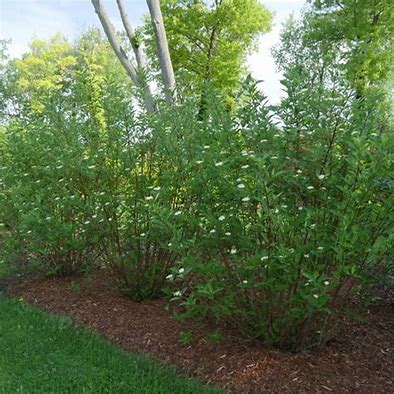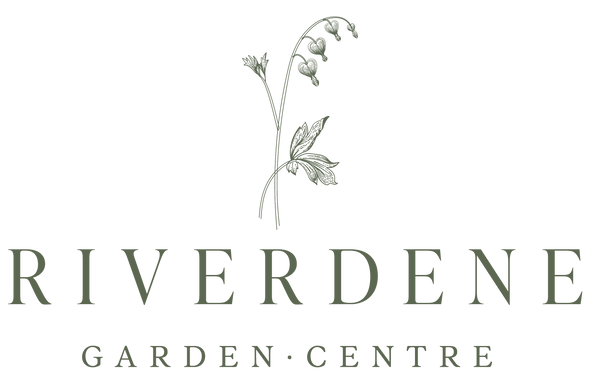Riverdene Garden Center
Red Osier Dogwood
Red Osier Dogwood
Couldn't load pickup availability
Cornus sericea
The Red Osier Dogwood is a cold-hardy, fast-growing, and multi-season shrub prized for its bright red stems, white flowers, and wildlife-attracting berries. This low-maintenance and highly adaptable shrub is commonly used for hedges, erosion control, windbreaks, and wildlife gardens in Southwest Saskatchewan. Its striking red stems provide beautiful winter interest, making it a valuable addition to any landscape.
Planting & Growing Conditions
- Hardiness Zone: 2-7 (extremely winter-hardy, perfect for prairie climates)
- Mature Size: 6-10 feet tall, 6-10 feet wide
- Growth Rate: Fast (grows 12-24 inches per year)
-
Sunlight Needs:
- Full sun to partial shade (best stem color in full sun)
- Tolerates shade but may produce fewer berries
-
Soil Requirements:
- Thrives in moist, well-drained soil
- Tolerates clay, sandy, and wet soils (ideal for rain gardens or wetland areas)
- Avoid prolonged drought unless well-established
-
Spacing:
- Hedges or screens: 4-6 feet apart
- Individual plants: 6-10 feet apart
Watering & Maintenance
-
Young Plants (First Year):
- Water deeply 2-3 times per week to establish roots
-
Established Shrubs:
- Prefers consistent moisture, especially in hot summers
- Tolerates occasional drought once established, but flourishes in damp conditions
-
Mulching:
- Apply a 2-3 inch layer of mulch around the base to retain moisture and regulate soil temperature
Fertilizing
- First Year: No fertilizer needed—focus on root establishment
-
Mature Shrubs:
- Apply a slow-release balanced fertilizer (e.g., 10-10-10) in early spring
- Organic alternative: Compost or well-rotted manure in spring
- Avoid excessive nitrogen, which can reduce stem color intensity
Pruning & Maintenance
- Best Time to Prune: Late winter to early spring, before new growth starts
-
How to Prune:
- Remove older stems (over 3 years old) to encourage new, vibrant red growth
- Thin out dead or overcrowded branches to improve airflow
- Every 2-3 years, cut back one-third of the oldest stems to ground level for rejuvenation
- For maximum winter color, cut the entire shrub down to 6-12 inches every 3-5 years
Flowers, Foliage & Seasonal Interest
- Bloom Time: Late spring to early summer (May-June)
- Flower Color: Small white clusters (attracts pollinators)
-
Fruit:
- Small white berries in late summer to fall (loved by birds but mildly toxic to humans)
-
Foliage:
- Spring & Summer: Medium to dark green leaves
- Fall: Leaves turn red, purple, or orange
-
Winter Interest:
- Brilliant red stems stand out in snowy landscapes
Pest & Disease Management
Resistant to: Deer, rabbits, urban pollution, and most pests
Common Pests:
-
Aphids & Scale Insects – Can cause curling leaves
- Solution: Use insecticidal soap or introduce ladybugs
-
Sawflies – Larvae may chew on leaves
- Solution: Hand-pick larvae or apply Bacillus thuringiensis (Bt) spray
Common Diseases:
-
Leaf Spot & Powdery Mildew – Causes spotting or white fungal coating on leaves
- Solution: Improve airflow and avoid overhead watering
-
Canker & Root Rot – Occurs in waterlogged soil
- Solution: Ensure proper drainage and prune out affected branches
Winter Protection
- Highly winter-hardy—no special protection needed in Zone 2+
-
Mulching:
- Apply 2-4 inches of mulch around the base for added root insulation
-
Pruning for color:
- Cut back old stems in late winter to promote fresh, bright red growth
Landscape Uses
Perfect for windbreaks, privacy hedges, and erosion control
Ideal for rain gardens and wetland plantings
Attracts birds and pollinators
Striking red stems provide winter interest
Low-maintenance and adaptable
Additional Notes:
- Red Osier Dogwood is an excellent four-season shrub, offering spring flowers, summer berries, fall foliage, and vibrant red stems in winter
- Lifespan: 20+ years with proper care
- Works well in naturalized plantings, cottage gardens, and wildlife-friendly landscapes
Photo courtesy of Proven Winners
Share


